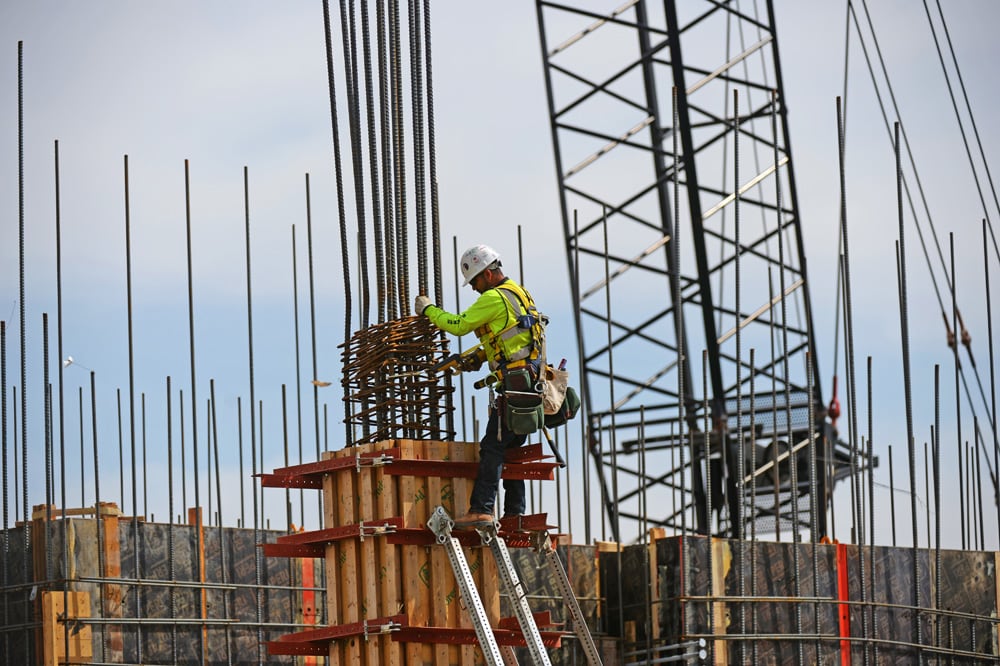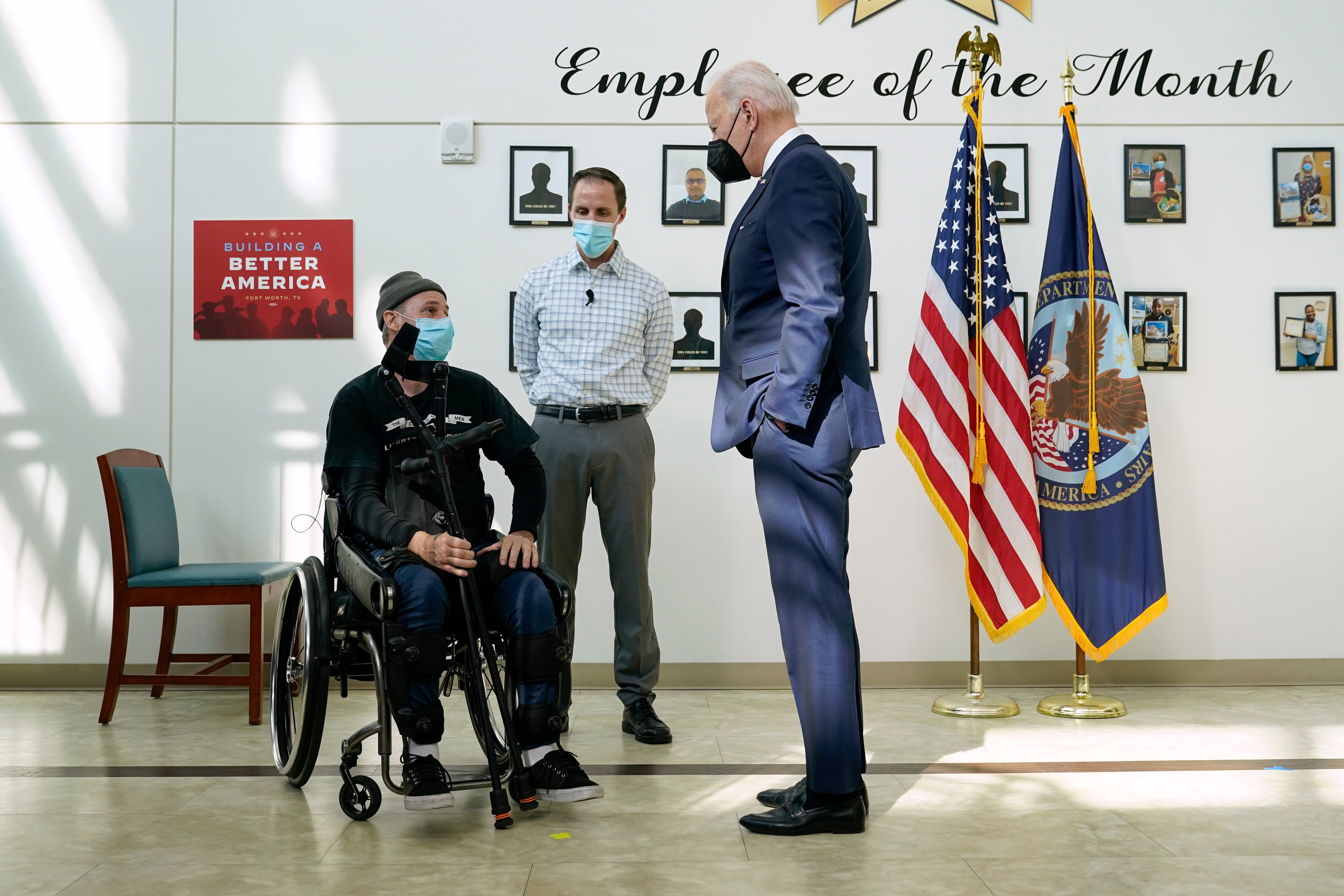Thirty-five Veterans Affairs Medical Centers in 21 different states would be closed or completely reconstructed under a nearly $2 trillion infrastructure overhaul unveiled by department leadership on Monday.
In addition, 14 new major VA hospitals would be built along with 140 multi-specialty community-based outpatient clinics. The plan in total would add 80 new medical buildings to the department’s existing inventory of more than 1,200 across the country.
The proposals represent a massive restructuring of VA’s footprint in America in coming years and could impact millions of veterans seeking medical care and hundreds of thousands of VA employees.
But, the plan must also get approval from both an independent commission of veterans advocates and Congress before moving ahead, leaving any potential changes years away.
RELATED

Last week, ahead of the plan’s release, VA Secretary Denis McDonough touted the changes as a critical rethinking of where VA facilities are located and how the department delivers care to veterans.
“We will be shifting toward new infrastructure or different infrastructure that accounts for how healthcare has changed, matches the needs of that market, and strengthens our research and education missions,” he said. “Most of all, we’ll ensure that veterans who live in [any] location have access to the world-class care they need when they need it.”
Congress mandated a reassessment of VA’s nationwide infrastructure in 2018 as part of a review styled after the military base closing rounds of the 1980s and 1990s.
Under the plan suggested by McDonough, 17 medical centers in twelve states would be completely closed.
They include three sites in New York state (Castle Point, Manhattan and Brooklyn), and two sites each in Pennsylvania (Philadelphia and Coastesville), Virginia (Hampton and Salem) and South Dakota (Fort Meade and Hot Springs).
Other facilities recommended for closure include:
- the Central Western Massachusetts VAMC;
- the Dublin VAMC in Georgia;
- the Chillicothe VAMC in Ohio;
- the Fort Wayne VAMC in Indiana;
- the Battle Creek VAMC in Michigan;
- the Alexandria VAMC in Louisiana;
- the Muskogee VAMC in Oklahoma;
- and the Palo Alto Livermore VAMC in California.
Seven of the 17 sites recommended for closing are located in the northeast, where the number of veterans (and the overall population) has declined in recent decades.
Services at those sites would be replaced by smaller inpatient and outpatient clinics to be built in those areas, or by construction of new VA medical centers in nearby communities.
The plan calls for construction of two new major medical sites in Virginia (Newport News and Norfolk) and Georgia (Macon and Gwinnett County) and a new New Jersey facility in Camden to offset the loss of some of the New York sites.
The new construction list includes:
- a medical center in King of Prussia, Penn.;
- a medical center in Huntsville, Ala.;
- a medical center in Summerville, S.C.;
- a medical center in Grand Rapids, Mich.;
- a medical center in Colorado Springs, Colo.;
- a medical center in Everett, Wash.;
- a medical center in Anthem, Ari.;
- and a medical center in Rapid City, S.D.
A total of eighteen medical centers would be rebuilt, either on their existing land or at a nearby new location. Three New York state centers are on that list (Albany, Buffalo and St. Albans) as are several other major metropolitan areas: Miami, Atlanta, Phoenix, Indianapolis, San Antonio and Washington, D.C.
Other replacement sites include:
- Bedford VAMC in Massachusetts;
- Wilkes-Barre VAMC in Pennsylvania;
- Beckley VAMC in West Virginia;
- Roanoke VAMC in Virginia;
- Durham VAMC in North Carolina;
- Tuskegee VAMC in Alabama;
- Hines VAMC in Illinois;
- Shreveport VAMC in Louisiana;
- and Reno VAMC in Nevada.
McDonough has said in recent weeks that the plan will not displace any VA workers or patients in the short-term, and that efforts will be made to minimize disruptions over the long-term.
The plan also calls for numerous improvements to VA staff pay and benefits as a way to strengthen retention efforts, thereby improving care throughout the system.
VA officials said the full recommendations would cost about $98 billion more over the next 30 years than simply maintaining the department’s current infrastructure, and about $41 billion more than modernization efforts projected to be needed over that time frame.
RELATED

That cost — and the potential impact of losing major medical centers in key community centers across the country — will be the focus of debate for lawmakers over the next year.
The independent AIR Commission will conduct public hearings in coming months as part of its review of VA’s recommendations, and will submit its own recommendations to the president for further review in early 2023. Whether the White House and Congress will ultimately accept those plans remains to be seen.
On Monday, lawmakers offered their initial reactions to the plans but promised closer scrutiny in the months to come.
“For far too long, VA’s infrastructure has been slowly crumbling. Veterans in every corner of the country deserve better,” Rep. Mike Bost, R-Ill., and ranking member of the House Veterans’ Affairs Committee, said in a statement.
“There are many milestones and hard decisions ahead but retaining the status quo is not an option.”
In a preview of fights to come, Rep. Chris Pappas, D-N.H., said officials would “jeopardize our veterans’ access to care” with plans to close three Community-Based Outpatient Clinics in his state. And Senate Veterans’ Affairs Committee Chairman Jon Tester, D-Mont., also took a more confrontational tone in his early assessment without offering any specific criticism.
“Any effort to kneecap our veterans’ health care is a non-starter for me,” he said. “I will fight tooth and nail against any proposals that blindly look to reduce access to VA care or put our veterans at a disadvantage.”
The full recommendations are available on the VA web site.
Leo covers Congress, Veterans Affairs and the White House for Military Times. He has covered Washington, D.C. since 2004, focusing on military personnel and veterans policies. His work has earned numerous honors, including a 2009 Polk award, a 2010 National Headliner Award, the IAVA Leadership in Journalism award and the VFW News Media award.





